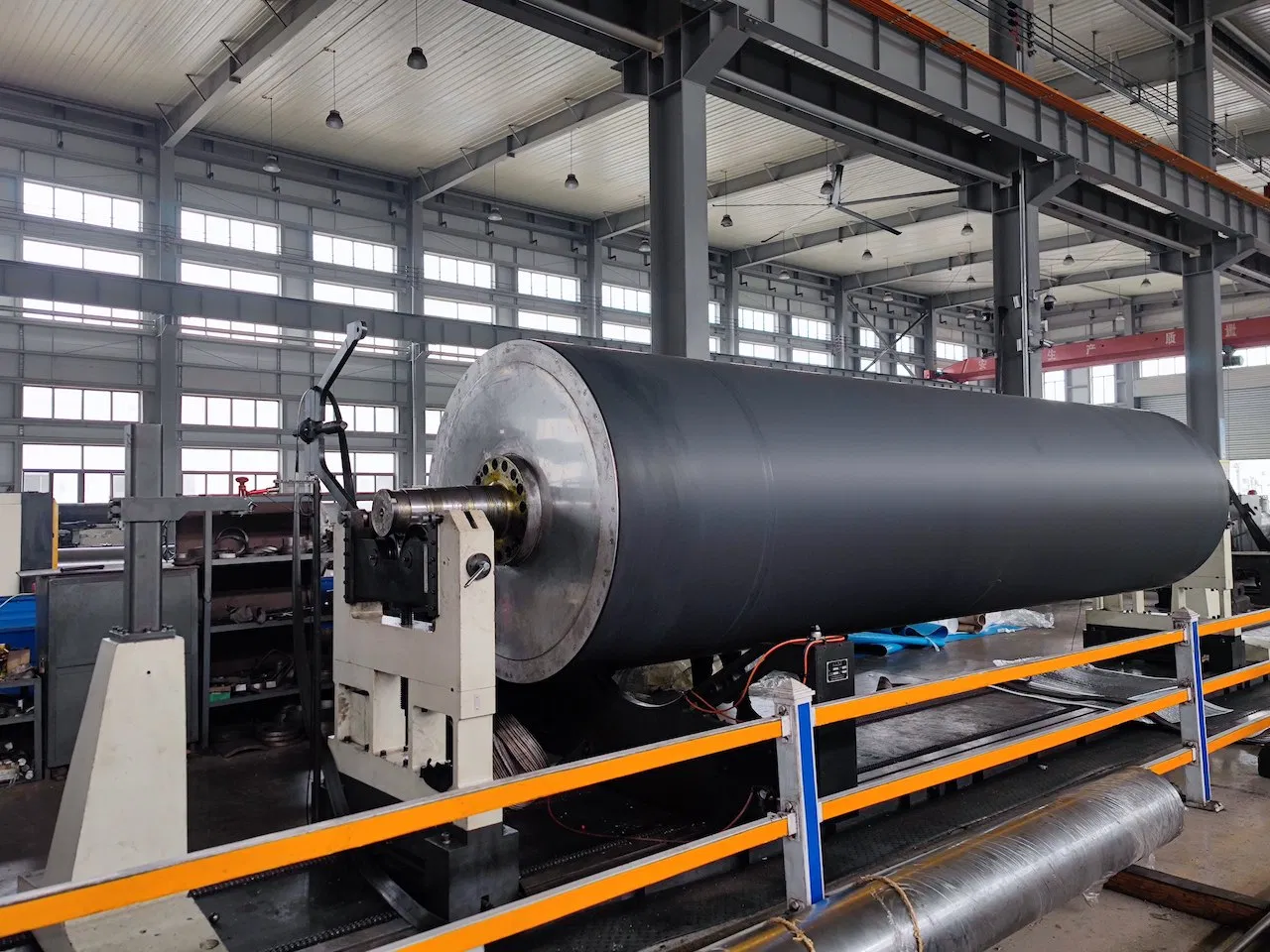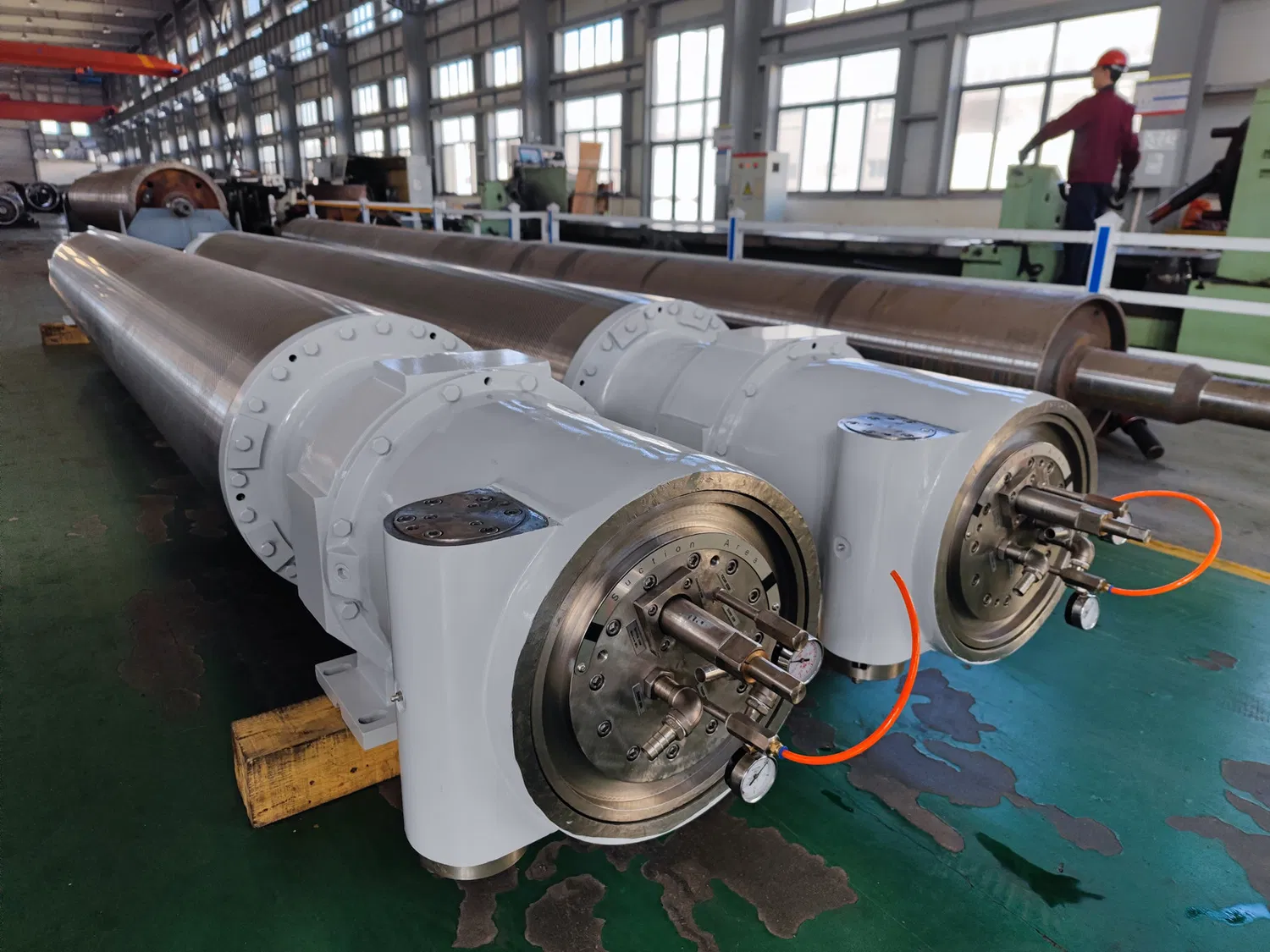In the world of papermaking, the relentless hum of the paper machine is the sound of profitability. Every minute it runs, it generates revenue. Conversely, every minute it’s down, the costs mount with staggering speed. Unplanned downtime isn't just an inconvenience; it's a direct assault on the bottom line. While many factors can lead to a shutdown, a surprising number of these catastrophic failures can be traced back to a single, critical phase: the specification of paper machine rolls.
To be honest, specifying a roll can seem like a straightforward procurement task. You have a position, you have dimensions, and you need a replacement. But this oversimplification is a trap. A paper machine roll is not a commodity; it's a highly engineered, precision component that must endure some of the most demanding industrial conditions imaginable. Getting the specification wrong is like building a house on a faulty foundation—it’s not a matter of *if* it will fail, but *when*.
In my experience, the most expensive problems are often born from the smallest oversights during the planning stage. The good news is that these costly errors are entirely avoidable. By understanding the common pitfalls, you can transform your roll specification process from a liability into a strategic advantage for reliability and performance. Let's dive into the top five mistakes that lead to costly downtime and, more importantly, how to avoid them.
Mistake #1: Ignoring the Specific Application and Operating Environment
The single most fundamental mistake is treating a roll as a generic part. A paper machine is a series of distinct environments, each with its own unique set of challenges. A roll that thrives in the forming section would fail catastrophically in the high temperatures of the dryer section. Failing to account for the specific operational context is a direct path to premature failure and, you guessed it, costly downtime.
The Devil is in the Details
A truly robust specification must be a detailed portrait of the roll's future life. Consider the variables at play:
- Temperature: The dryer section can see surface temperatures exceeding 150°C (300°F). A roll cover or bearing lubricant not rated for this heat will degrade rapidly, leading to delamination or seizure.
- Moisture: The wet end of the machine is a constantly damp, high-humidity environment. This creates a significant risk of corrosion for the roll body and bearing housings if the wrong materials are chosen.
- Chemical Exposure: What chemicals will the roll encounter? Sizing agents, retention aids, dyes, and cleaning chemicals can all be aggressive. A polyurethane cover might be perfect for abrasion resistance but could be chemically attacked by a specific solvent used during wash-ups.
- Nip Loading and Pressure: The press section involves immense pressures to dewater the sheet. The roll body, journals, and bearings must be designed to handle these specific loads without excessive deflection or fatigue. An under-designed roll will literally bend or break under pressure.
It's worth noting that these factors don't exist in isolation. A press roll, for example, operates under high pressure *and* in a wet, chemically-rich environment. The specification must account for this combination of stressors. Simply sending a drawing with basic dimensions to a supplier without this crucial context is asking for trouble. A good supplier will ask these questions, but a proactive mill will provide this information upfront, ensuring the design process starts on the right foot.

Mistake #2: A Flawed Approach to Materials and Coatings
Once the operating environment is understood, the next critical step is selecting the materials for the roll shell, heads, journals, and, of course, the cover. This is where a dangerous balancing act often occurs between initial cost and long-term performance. Mistakes here typically fall into two camps: under-specifying to save money or over-specifying out of an abundance of caution.
The Pitfall of Under-Specifying
Let's be honest, budgets are always a concern. It can be tempting to opt for a standard carbon steel shell when a stainless steel or composite alternative is more expensive. However, this is the definition of false economy. If that carbon steel roll is placed in a corrosive wet-end position, it will begin to rust. This corrosion not only weakens the roll structure but can also contaminate the paper sheet and cause surface defects on the roll cover, leading to frequent regrinding and a drastically shortened service life. The initial savings are quickly erased by the cost of multiple replacements, lost production, and maintenance labor.
The Hidden Costs of Over-Specifying
Interestingly enough, the opposite can also be a problem. Is it necessary to specify a high-end tungsten carbide coating for a felt roll that sees minimal wear? Probably not. Over-specifying—choosing materials or coatings that are far more robust than the application requires—needlessly inflates capital expenditure. Furthermore, exotic materials can have much longer lead times, complicating inventory management and replacement planning. They can also require specialized grinding equipment or expertise, adding another layer of cost and complexity to maintenance. The goal is not to choose the *most expensive* option, but the *most appropriate* one.
The key is a value-based analysis. Work with your supplier to match the material to the specific threats identified in Mistake #1. For high-wear positions, a ceramic or carbide coating might be a brilliant investment that pays for itself many times over. For a simple carrier roll in a dry, low-load area, a standard rubber cover on a steel shell might be perfectly adequate and cost-effective. It's about making an informed, engineered choice, not a guess.
Mistake #3: Overlooking Critical Design Geometries: Crown, Balance, and Bearings
A roll is more than just a cylinder made of the right material. Its geometric and dynamic properties are just as critical to its function and longevity. Overlooking details like crown profile, balance quality, and bearing selection is a classic error that directly impacts both paper quality and machine reliability.
The Crowning Achievement of Uniformity
When a roll is put under load in a nip, it deflects, or sags, slightly in the middle. If the roll were a perfect cylinder, this deflection would cause the pressure to be higher at the edges than in the center. This results in an uneven moisture or caliper profile in the paper sheet—a major quality defect. Crowning is the process of grinding a very slight convex curve into the roll to compensate for this deflection. When under load, the crowned roll flattens out, creating a perfectly uniform nip pressure across the entire machine width.
Specifying the wrong crown—or no crown at all—is a recipe for disaster. The correct profile depends on the roll's dimensions, material, and the specific nip load it will experience. This is not a "one-size-fits-all" parameter. It requires careful calculation, and it's a critical piece of data that must be included in the specification.

The Unseen Vibration from Poor Balancing
As paper machines get faster, the importance of roll balance increases exponentially. Every rotating object has a center of mass. If that center of mass does not align perfectly with the center of rotation, it will induce vibration. Dynamic balancing is the process of testing the roll at its operational speed and adding or removing weight to correct this imbalance.
An improperly balanced roll is a ticking time bomb. The constant vibration it creates will:
- Destroy bearings prematurely.
- Cause fatigue and cracking in the roll itself and the machine frame.
- Induce chatter marks on the paper sheet.
- Lead to catastrophic failure at high speeds.
The specification must clearly state the required balance grade (e.g., G1.0, G2.5 per ISO standards) based on the machine's operating speed. Settling for a lower-quality balance to save a few dollars is one of the worst trade-offs one can make.
Bearings: The Unsung Heroes
Finally, the bearings are the critical interface between the rotating roll and the stationary machine frame. They are not an afterthought. The specification must detail the required bearing type (e.g., spherical roller, cylindrical roller), size, clearance (C3, C4), and lubrication method (oil or grease). Using an incorrect or low-quality bearing is one of the most common causes of roll failure and subsequent unplanned downtime.
Mistake #4: Failing to Collaborate with Your Roll Supplier
So, how do you ensure you get all these complex details right? The answer lies in collaboration. One of the biggest process mistakes mills make is treating the roll supplier as a mere order-taker rather than an expert partner. Firing off a purchase order with a decades-old drawing and expecting a perfect result is wishful thinking.
Think about it this way: would you trust a doctor who wrote a prescription without asking about your symptoms or medical history? Of course not. So why would you procure a critical, six-figure asset without a deep technical dialogue with the people who will build it?
A top-tier roll manufacturer is a repository of immense knowledge. Their engineers have seen thousands of applications, solved countless problems, and understand the intricate relationships between materials, design, and performance. Engaging them early in the specification process is a powerful strategy. A good supplier will:
- Ask Probing Questions: They won't just accept a drawing. They'll ask about the paper grades being run, current roll performance, specific wear problems, machine speed, cleaning procedures, and future production goals.
- Perform a Design Review: They will analyze your existing drawing and specifications, often using Finite Element Analysis (FEA) to model stresses and deflections, and suggest improvements based on modern engineering principles and materials.
- Offer Solutions, Not Just Products: Perhaps the chronic failure of a certain roll isn't a roll problem at all, but a machine alignment issue. A true partner will help diagnose the root cause, even if it means they don't sell a new roll immediately. This builds trust and leads to better long-term outcomes.
In my experience, the most successful roll installations are the result of a partnership between the mill's engineering and maintenance teams and the supplier's technical experts. This collaborative approach ensures all variables are considered, assumptions are eliminated, and the final specification is optimized for reliability and performance.
Mistake #5: Focusing Only on Day One, Not the Entire Roll Lifecycle
The final mistake is a matter of perspective. A roll specification that only considers the initial purchase and installation is dangerously shortsighted. A truly comprehensive specification plans for the roll's entire life, from delivery to its eventual retirement. This concept is often referred to as Total Cost of Ownership (TCO), and it's a far more accurate measure of value than the initial price tag.
A lifecycle-focused specification should address several key areas:
Maintenance and Serviceability
The roll will need to be maintained. The specification should consider this from the outset. For example, the roll cover material and thickness directly impact its service life. A specification should define the total usable cover thickness and the recommended grinding increments. This allows for accurate forecasting of how many regrinds are possible before a full re-cover is needed, which is crucial for maintenance budgeting.
Repair and Rebuild Strategy
No roll lasts forever. Eventually, it will need to be rebuilt. Is the roll designed for efficient servicing? For example, are the bearing housings designed for easy removal and replacement? Are the journals repairable or do they require complete replacement? Specifying a roll that is difficult or impossible to service effectively turns a standard repair into a major capital project.
Documentation and Data
A complete specification package doesn't end with the roll. It includes comprehensive documentation: certified drawings, balance reports, material certifications, and recommended maintenance procedures. This data is invaluable for future troubleshooting, maintenance planning, and specifying the next replacement, ensuring that knowledge isn't lost over time.
By shifting the focus from "How much does this roll cost to buy?" to "How much does this roll cost to own and operate over its entire life?", mills can make far smarter investment decisions. A slightly more expensive roll that offers double the cover life, requires less frequent maintenance, and is designed for easy repair will almost always have a lower TCO and contribute to higher machine uptime.
In conclusion, the path to avoiding costly downtime begins long before a wrench is ever turned. It begins with a meticulous, collaborative, and forward-thinking specification process. By sidestepping these five common mistakes, you can ensure that every new roll installed in your machine is not just a replacement part, but a strategic investment in reliability, quality, and profitability.
For more detailed information, please visit our official website:paper machine rolls
About the author: Johnathan Reed is a Senior Reliability Engineer with over 25 years of experience in the pulp and paper industry. Specializing in paper machine optimization and failure analysis, Johnathan has dedicated his career to helping mills improve efficiency and reduce downtime through better engineering practices. He is a recognized expert in roll design, material science, and predictive maintenance strategies, and he is passionate about sharing his knowledge to help the next generation of papermakers succeed.


